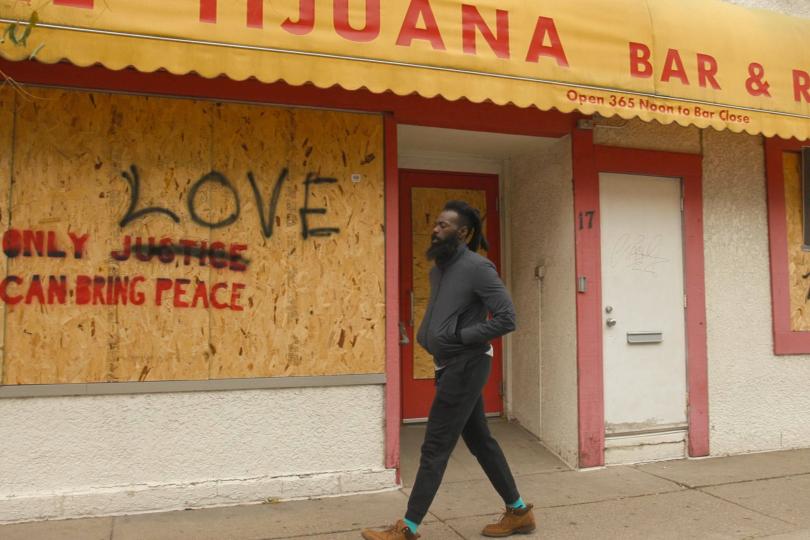The New Black Arts Movement of the 20s and The Joy Generation

I am struggling with intraracial-criticism. Which is becoming increasingly flat. It raises concerns about the future of storytelling in an era where audiences are too inundated with the hyper-representation of violence against Black people and the fuss of social media to formulate healthy critical analysis of the work of Black creatives. I only hope that it does not dilute the fire that Black writers rightfully inherit, or temper our will, and our free will, to bear witness and wrestle with certain aspects of unsung American history.
The simple truth is that we have stumbled upon a new “roaring 20s.” Which, in the early 20th century, introduced the Harlem Renaissance, a wildly prolific era of Negro (Black) creativity that concretized the emergence of a Negro aesthetic. When I came out of graduate school in 2018, the critically successful work of Black writers off-broadway resisted realism, while also syncretizing hip-hop-pop culture and the academic theory one picks up from a conservatory, or some other intensive program of study for theater-makers. Many of which are focused on teaching the principles of a Western-European aesthetic. At the time, I was writing chamber dramas and I felt a bit disconnected from the brainy off-broadway hits. And I wondered if my plays would get stuck in development, because the industry has a tendency to champion one Black aesthetic per era.
Some of our greatest playwrights were autodidacts. Lorraine Hansberry left college for New York, reportedly underwhelmed with academia. And August Wilson was a studious high-school dropout, reputedly disconcerted from his formal education because of the same prejudices he would go on to examine in his plays. On the contrary, the next generation introduces a class of (liberal-arts) degree-holding playwrights like Anna-Deavere Smith and Suzan-Lori Parks. Some may argue that the shift in the formal education of the playwrights led to more experimentation with form. This could even be said about the modernistic plays of Adrienne Kennedy, who also completed her college education. At any rate, there is a pattern of a shifting Black aesthetic, which, because of limited production opportunities, may lead to seasons of homogenous depictions of Black life on stage. Recently, while rereading plays in order to think about them pedagogically and teach, I could not help but notice a dominant sentiment from era to era. The intraracial sensibility in modern Black drama breaks away from the Black nationalist sensibility of the Black Arts Movement in the 60s which broke away from the integrationist sensibility of the 50s. This of course has as much to do with the sentiment in the street as it has to do with the playwright's unique voices. However, certain plays did raise questions from my Black students about the hyper-representation of “trauma” in Black drama. All of whom, myself included, are returning to campus on the heels of a pandemic and looking for joy. Fed up with pessimism, I call them the Joy Generation.
This is not an indictment of Black drama. I am a disciple of Black drama. However, I do believe that it is not what gets made but it is what gets praised that creates the hyper-representation of “trauma” that the Joy Generation is protesting against. Therefore, it is less about limited narratives and more about limited production opportunities for nuanced depictions of Black life in America in one given season. Which would ultimately lead to the levity younger audiences are craving. Part of the challenge may be that the curation of Black drama is not always diverse. For example, Stephen Karam’s character study The Humans is technically “plotless,” but has received critical acclaim. On the other hand, when Black playwrights, like myself, submit similar naturalistic plays in an attempt to portray accurate depictions of ordinary Black people in plausible circumstances, we are dramaturgically interrogated about the plot and asked reductive questions like “Why this play? Why now? etc.” As if everything we write has to contain a message addressing current social issues. There should be room for it all. There should be freedom of choice. There is nothing dramaturgical about those questions. They are more about the bottom line: how could we sell this play to modern audiences? Which has nothing to do with merit nor plausibility.
While I empathize with their protest, the Joy Generation is still peculiar to me because rather than learn from seasoned writers, they are quick to criticize their work out of context and therefore block the lesson. When I was introduced to the American theatrical canon, I rarely had a criticism about the work, because I was more interested in what the writer could teach me as a young playwright. Eugene O’Neill’s Long Day’s Journey Into Night taught me I could explore biography on stage, and Suzan-Lori Parks’ Topdog/Underdog taught me I could do just as much with less, etc. It is disheartening to witness a student leap to criticism before they have had an opportunity to engage the text and its author as a teacher. Furthermore, if everyone starts writing plays about joy, who are we silencing?
It begs the question: has limited depictions of Black life led to limited depictions of Black life? Much like a pendulum, it swings from one homogenous depiction to the next. For example, the realism of the 50s is breaking from the caricatures born out of minstrelsy, and the protest plays of the 60s are breaking from the tradition of realism in order to mirror the fiery protests in the streets. Then in the 80s August Wilson returns to realism in an effort to center the intraracial-drama of ordinary Black life, which naturally pushes whiteness into the background, ignores it, or reduces it to a talking point. And although his work shares certain sentiments of the protest plays produced before his reign, it is still relatively tempered within the style of realism. There is a pattern. Each class breaks away from the aesthetic of their predecessors. Which is their right.
My only concern is that we are careful not to dismiss the work of a generation of people who made it possible for us to explore. However, this conviction is not always evident in the Joy Generation, who at times appear to be frustrated with plays that mirror history or grapple with current events.
This leads me to my next question. Who or what is responsible for continued waves of homogeneous portrayals of Black life on stage?
Storytelling shapes public opinion. And public opinion shapes convictions. And convictions lead to votes, which ultimately shapes policy and affect our everyday lives. The playwrights of the past were documenting movements. Literary movements are a reflection of movements in the streets. Which, in addition to concretizing events, literature, also concretizes sentiment. And sentiment is what separates playwriting from reportage or a history lesson. Unlike the journalist or the historian, the playwright has the creative license to observe, inject, and therefore center the sentiments of the unheard.
Intraracial policing of creative autonomy and the content in Black plays perpetuates the same oppression the cultural critics are protesting against. I cannot think of anything more oppressive than policing someone’s expression. It is a kind of paternalism masked as cultural accountability. Furthermore, it is a symptom of double consciousness. It is a relic. The perennial question of: Who is it for? is rooted in the consciousness that some other group of people are watching.
The new generation is demanding joy. And that is their right. They deserve it. But they must understand that their freedom to demand joy was bought at a price by their groundbreaking literary forefathers and foremothers who did not have the privilege to write without the convictions of an activist. I hope gratitude becomes more infectious than cynical criticism. Some contemporary writers carry on the legacy of activism, rather than break away from it. And there is room for us all. Critical analysis is not whether you like something or not. Critical analysis is an evaluation of the work in order to deepen an audience's understanding of it. You cannot deepen an audience’s understanding of a play if your bias is standing in their way. You cannot deepen your understanding of a play if your bias is standing in your way. That is uncritical analysis.
I think that when we remove sensationalism out of analysis it becomes critical. Analysis becomes sensationalized, or incensed even, when it is filtered through ad-hominems and one's identity. This is evident when the analyzer spends more time discussing the makeup of the playwright and determining the success of their work based on how accurately it portrays their culture. A play is not unsuccessful because it does not depict your world or your worldview. Let me reiterate that this article is about intraracial criticism. Which I maintain may hinder the future, freedom, and health of Black storytelling if it is left unchecked.
Lastly, there still seems to be this push for Black drama to transcend race. I have not witnessed any of my non-Black constituents fixating on their need to transcend their races. Whereas Black writers are burdened with the task to write universal stories… as if our drama is soot the rest of humanity has to squint to see themselves in.




